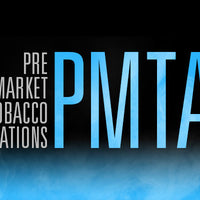Back in 2011, the FDA and the National Institute of Health teamed up to investigate Americans’ smoking and vaping habits in order to create more effective tobacco control policies. Now that the first round of results has been released, the project has been extended through 2022 to look more specifically at the behaviors of youth. Fortunately for vapers, the early data supports what most of us have been saying all along: E-cigs are not turning kids into smokers.
FDA E-Cig Study Contradicts Negative Claims About Vaping

The Population Assessment of Tobacco Health, or PATH, study is a longitudinal study that began in 2013. Its purpose is to measure the impact of current tobacco regulations established under the Family Smoking Prevention and Tobacco Control Act and to provide direction for future policy making decisions.
Originally planned to include three waves, an additional four waves of research were recently approved. The first wave of data, which was collected from more than 59,600 diverse smokers and non-smokers, became publicly available in March 2016. Data from the second wave is currently under review, and the third wave of the study is about 40 percent completed.
So, what does the PATH study say about e-cigs so far? Despite vaping’s recent boom in popularity, regular e-cig users are still a very small minority. Although many Americans have tried an e-cig at some point, only 5.5 percent of adults and 3.1 percent of youth ages 12-17 reported vaping in the past month. Of that small group, only 40 percent said they used an e-cig more than three times within the previous 30 days, which conflicts with the anti-vapers’ narrative that e-cigs are as addictive as tobacco cigarettes. Furthermore, the early PATH study findings contradict the myth that e-cigs act as a gateway to tobacco use because over 91 percent of people who have tried vaping reported using tobacco first.
FDA E-Cig Study Results: The Gateway Claim
Though not explicitly stated by the researchers, their evidence seems to suggest that more smokers are turning to e-cigs rather than the other way around. In an interview with Consumer Affairs, Dr. David T. Levy, who is a professor of oncology at the Georgetown Lombardi Comprehensive Cancer Center, stated, “The big picture tells us that these products appear to be used mostly by people who already are or who are likely to become cigarette smokers.” Dr. Levy also noted that the rise of e-cigs has coincided with a continued decrease in tobacco use, which supports research suggesting that e-cigs can help people quit tobacco.
FDA E-Cig Study Results: Flavored E-Liquid
In the past, vape industry critics have accused e-cig companies of targeting youth by marketing flavored products, but PATH researchers found the preference for variety to be universal among adult vapers. White Cloud’s own surveys about e-cig flavor preferences revealed that adult consumers greatly favor fruit flavored e-liquids over ones that taste like tobacco. The largest e-cig survey to date, conducted by the Consumer Advocates for Smoke-Free Alternatives (CASAA), also found that having an abundance of e-cig flavor options that taste superior to tobacco cigarettes is critical to helping smokers successfully transition to a safer alternative.
White Cloud has taken extensive measures to keep e-cigs away from youth and follow vaping age restrictions while giving adult vapers what they demand, which is the option to pursue a potentially safer alternative to tobacco. Hopefully, policy makers at the FDA will one day embrace e-cigs as a tobacco cessation tool. Until then, vapers at least have more evidence to discredit the many myths that still persist about e-cigs.






